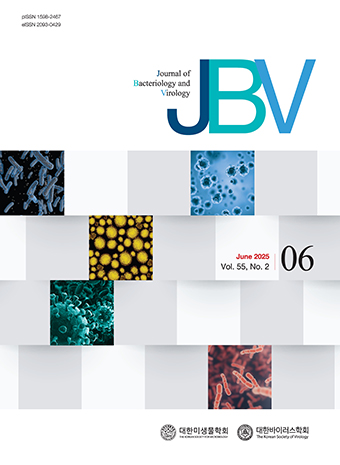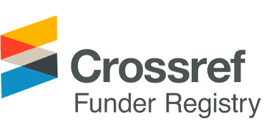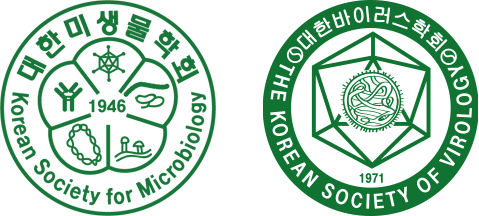Publishing Policies
Guidelines of the research ethics for JBV
Article 1. Purpose
These guidelines are intended to define the research ethics, especially involved in the publication of ‘The Journal of Bacteriology and Virology (JBV)’ and related scientific researches, data collections and conducts during the process.
Article 2. Definition of terms
1. Research misconduct is the process of unethical or unsound research. Research misconduct is defined as fabrication, falsification, or plagiarism while proposing, performing, or reviewing research or while reporting research.
- (1)Fabrication is an act of making up and then reporting the fake data and/or results.
- (2)Falsification is an act of manipulating of the research materials/equipment/processes or the changing/omitting the data and results such that the research is not accurately represented in its record.
- (3)Plagiarism is an act of appropriating another person’s ideas, processes, results, or words without giving the appropriate credit.
- (4)Duplicate publication is an act of reusing works previously published by the author without citation.
- (5)It is important not to add names of those who did not contribute significantly; it is equally important to include all authors who did meet the author criteria.
- (6)Research misconduct does not include honest error or differences of opinion.
2. The whistleblower is the person who informs suspected misconducts to the research integrity officer.
3. The respondent is the person who is suspected of research misconduct.
Article 3. Authorship
1. The award of authorship should be balanced with the intellectual contributions to the conception, design, analysis and writing of the study against the collection of data and the other routine works. If there is no task that can reasonably be attributed to a particular individual, then that individual should not be credited with the authorship.
2. Authorship credit should be based on 1) the substantial contributions of the conception and design, the acquisition of data, or the analysis and interpretation of data; 2) the article drafting or revising it critically for the important intellectual contents; and 3) the approval of final version to be published. Authors should meet the conditions of 1, 2, and 3. Any contributions for the paper which do not fit all three of these criteria should be listed in the acknowledgment section of the paper.
3. Data should be appropriately analyzed, but inappropriate analysis does not necessarily amount to misconduct. All sources and methods used to obtain and analyze data including any electronic pre-processing should be fully disclosed.
4. Order of authors: The first author conducts and/or supervises the data generation, analysis, the proper presentation, and the interpretation of results. He/she pulls the paper together and submits it to the journal, once the content is approved by all authors.
5. The corresponding author is either the first author, or a senior author from the institution, who has been involved with all aspects of the paper, and meets all three conditions above of being an author. The corresponding author’s role is important to answer any questions in future years from other researchers worldwide.
6. It is unethical to submit the paper to more than one journal in parallel. Each submission of the same paper, or the same research results and discussion should be sequential.
7. It is not acceptable to copy other people’s work without citation. This does not include copying lines of text from a reference without using quotation marks. Do not use figures or tables without permission. This is called plagiarism and is seen as unacceptable and unethical behavior by researchers worldwide.
8. Do not mention previous work without a citation. Do not take and reuse the blocks of the text in your next paper.
9. Acceptable secondary publication: Certain types of articles, such as guidelines produced by governmental agencies and professional organizations, may need to reach the widest possible audience. In such instances, editors sometimes deliberately publish material that is also being published in other journals, with the agreement between the authors and the
editors of those journals. Secondary publication for various other reasons, in the same or another language, especially in other countries, is justifiable and can be beneficial provided that the following conditions are met.
- (1)The authors have received approval from the editors of both journals (the editor concerned with secondary publication must have a photocopy, reprint, or manuscript of the primary version).
- (2)The priority of the primary publication is respected by a publication interval of at least 1 week (unless specifically negotiated otherwise by both editors).
- (3)The paper for secondary publication is intended for a different group of readers; an abbreviated version could be sufficient.
- (4)The secondary version faithfully reflects the data and interpretations of the primary version.
- (5)The footnote on the title page of the secondary version informs readers, peers, and documenting agencies that the paper has been published in whole or in part and states the primary reference. A suitable footnote might read: “This article is based on a study first reported in the [title of journal, with full reference].” Permission for such secondary publication should be free of charge.
- (6)The title of the secondary publication should indicate that it is a secondary publication (complete republication, abridged republication, complete translation, or abridged translation) of a primary publication. Of note, the NLM does not consider translations to be “republications” and does not cite or index translations when the original article was published in a journal that is indexed in MEDLINE.
Article 4. Duty of editors
1. Editors’ decisions to accept or reject a paper for publication should be based only on the paper’s importance, originality, and clarity, and the study’s relevance to the remit of the journal.
2. All original studies should be peer reviewed before publication, taking into full account possible bias due to related or conflicting interests.
3. Editors must treat all submitted papers as confidential.
4. When a published paper is subsequently found to contain major flaws, editors must accept responsibility for correcting the record prominently and promptly.
5. Editors should avoid the selecting external peer reviewers with obvious potential conflicts of interest – for example, those who work in the same department or institutions as any of the authors. Editors who make the final decisions of manuscripts must have no personal, professional, or financial involvements in any of the issues they might judge.
Article 5. Referees/reviewers and their ethical responsibility
1. Peer reviewers are external experts chosen by editors to provide written opinions, with the aim of improving the study.
2. Reviewers should do their work impartially and confidentially.
3. Reviewers should evaluate a biomedical article or publication on the following merits:
Importance – Does the research impact health and health care?
Usefulness – Does the study provide useful scientific information?
Relevance – Does the research apply to the journal’s readers and content area of interest?
Sound methods – Was the research conducted with sound scientific methods that allowed the researchers to answer their research questions?
Sound ethics – Was the study conducted ethically ensuring proper protection for human subjects? Were results reported accurately and honestly?
Completeness – Is all information relevant to the study included in the article?
Accuracy – Is the written product a true reflection of the conduct and results of the research?
4. Reviewers must not contact the author directly, but must make any comments about the manuscript to the author via the review processes and the handling editor of the journal.
5. If a reviewer has a conflict of interest in peer-reviewing a paper, he/she should refuse the manuscript review and notify to the journal editor.
6. The duty of confidentiality in the assessment of a manuscript must be maintained by expert reviewers, and this extends to reviewers’ colleagues who may be asked (with the editor’s permission) to give opinions on specific sections.
7. The submitted manuscript should not be retained or copied.
8. Reviewers and editors should not make any use of the data, arguments, or interpretations, unless they have the authors’ permission.
9. Reviewers should provide speedy, accurate, courteous, unbiased and justifiable reports.
10. If reviewers suspect misconduct, they should write to the editor confidentially.
11. Journals should publish the accurate descriptions of their peer review, selection, and appeal processes.
12. The author (authors) should not be told the names of the reviewers.
Article 6. Application of research ethics
1. The Korean Society for Microbiology (KSM) and the Korean Society for Virology (KSV) are professional associations representing individual scientists who join together to promote research and education in the field of microbiology and related biomedical sciences. The rules, regulations, and structures of KSM and KSV are specified in the Bylaws of KSM and KSV. Governed by the Council, KSM and KSV engages it members and staff in activities that further the mission of KSM and KSV. Intellectual honesty should be actively encouraged in all medical and scientific courses of study, and used to inform publication ethics and prevent misconduct. With that in mind, these guidelines have been produced.
2. KSM and KSV shall plan and coordinate educational activities relating to research ethics.
3. Publication committee is responsible for management and evaluation of The Journal of Bacteriology and Virology and other official publications of KSM and KSV. The committee shall apply research ethics and sanctions to the authors.
4. KSM and KSV shall organize Research Ethics Committee to discover, report, and investigate misconduct by the researchers.
5. Five or more members of the Ethical Committee representing different institutions shall be elected by the KSM and KSV membership, and four members of the committee shall be
appointed by the Council. Members shall serve staggered two-year terms. The chair is a non-voting member of the Council and is elected by the Committee members
6. The committee shall be responsible for management and evaluation of misconduct, subject to the general supervision of council.
7. A person suspecting the research misconduct should report the incident to an editor of JBV who should immediately look into the allegation to assess if it is both: a) research misconduct; and b) within the jurisdiction of KSM or KSV.
- (1)If a suspected breach of ethics is found whilst reading the various articles in the journal, the reader should draw this to the attentions of the journal’s editor, with specific suspicions or comments, and if possible, supportive evidence, e.g. a copy of the original article that was plagiarized, and etc.
- (2)If one finds that his/her paper has been plagiarized, always contact the Editor of the journal in which the other article appeared and send a copy of your article for comparison.
- (3)If one thinks that he/she is, or should be, a co-author, and were neither consulted nor listed on a paper, contact the editor of the JBV in which the paper appeared as soon as possible. Papers get corrected by publishing Corrigenda or Errata or similar to reflect such changes.
8. The person who informs the research integrity officer of suspected misconduct (the whistleblower) should be treated with “fairness and respect” by the Associations and efforts should be made to protect their job and reputation as necessary.
9. The person suspected of research misconduct (the respondent) should be protected and treated with “fairness and respect” by the Associations.
10. The research integrity officer should strive to maintain the confidentiality of both the whistleblower and the respondent.
11. If the misconduct issue is a criminal one or exceeds the jurisdiction of the KAM and KAV, the research integrity officer should report the misconduct allegations to the proper authorities or agencies.
12. All allegations must be made in writing, signed and dated, and must identify the complainant. Complainants must set out all relevant information and include supporting
evidences.
13. Once a formal complainant of research misconduct is received, a preliminary inquiry will be performed to make the following threshold assessments:
- (1)is the complainant outside the jurisdiction of the KAM and KAV?
- (2)is it clearly mistaken or unjustified?
- (3)does it involve allegations that, even if proven, would not constitute research misconduct?
- (4)is it frivolous, vexatious or in bad faith?
- (5)and, if not any of the foregoing, is there a reasonable prospect that a further investigation will enhance the integrity of the scientific process?
13. It is not the purpose of the inquiry to determine whether or not research misconduct has occurred. Factual information is gathered and reviewed to determine whether the threshold for proceeding further is met, and whether an investigation of the complainant is warranted.
14. If the inquiry determines that an investigation is warranted, a Research Ethics Committee will be established to examine the allegations and to weigh the evidence to determine whether or not research misconduct has occurred, and, if so, who the involved parties are. The committee will submit a report of its findings of fact and its decision as to whether or not there is research misconduct to the responsible Chair, who will inform the President of the KSM and/or KSV.
15. The respondent should be given the opportunity to respond to accusations of serious misconduct.
16. Sanctions may be applied separately or combined. The followings are ranked in approximate order of severity.
- (1)A letter of explanation (and education) to the authors, which there appears to be a genuine misunderstanding of principles.
- (2)A letter of reprimand and warning as to future conduct.
- (3)Publication of a notice of redundant publication or plagiarism.
- (4)An editorial giving full details of the misconduct to the Heads of the Korean Society for Microbiology and the Korean Society for Virology and the Council.
- (5)Refusal to accept future submissions from the individual, unit, or institution responsible for the misconduct, for a stated period (one year).
- (6)Formal withdrawal or retraction of the paper from the scientific literature, informing other editors and the indexing authorities.
- (7)Reporting the case to the Korean Association of Medical Journal Editors (KAMJE).


 JOURNAL OF BACTERIOLOGY AND VIROLOGY
JOURNAL OF BACTERIOLOGY AND VIROLOGY










